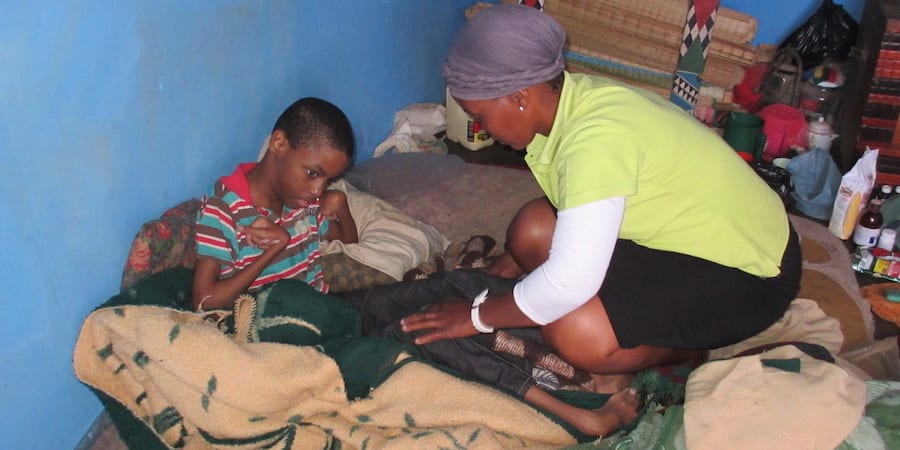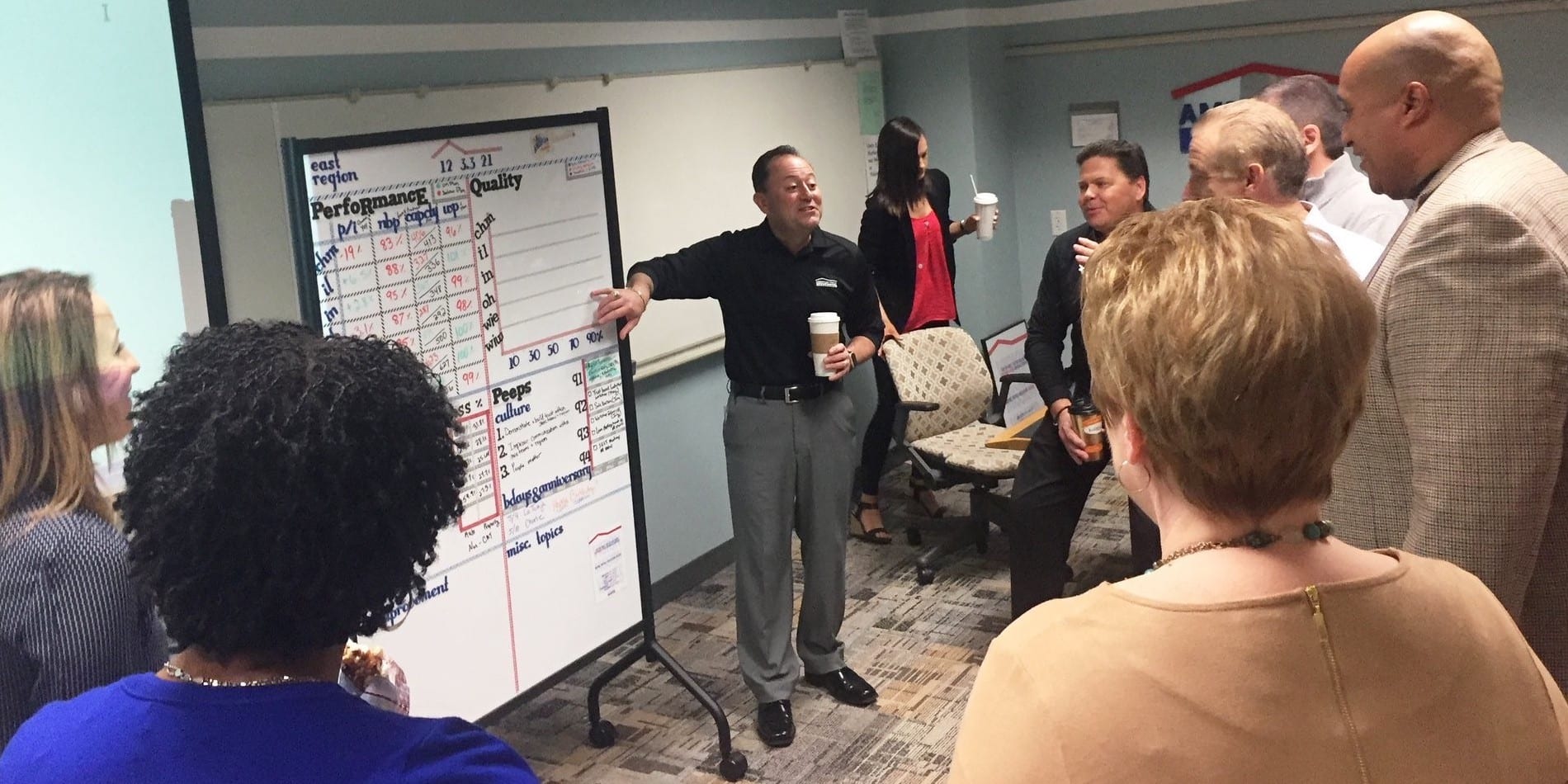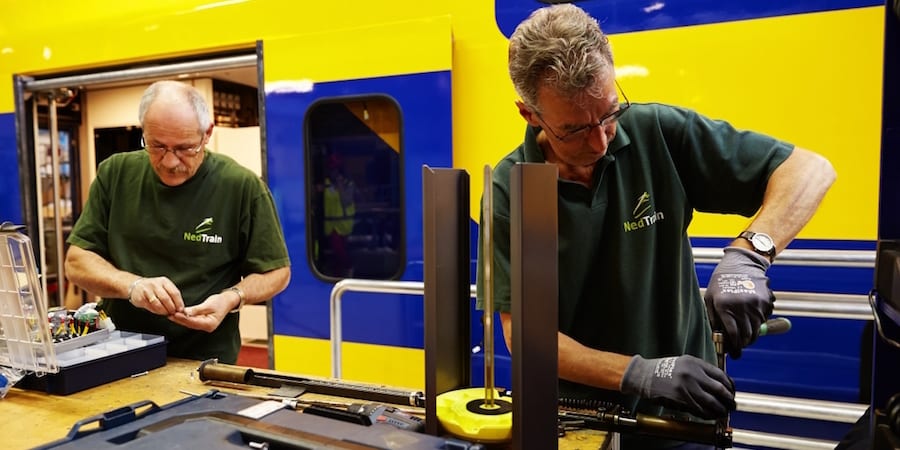
Lean thinking transforming the lives of African children
FEATURE – At Malamulele Onward in Johannesburg, a do-it-yourself lean transformation is increasing the impact the nonprofit organization is having on South African children living with cerebral palsy.
Words: Dr Gillian Saloojee, Executive Director, Malamulele Onward - Johannesburg, South Africa
Between two and three children out of every 1,000 live births are estimated to have cerebral palsy (CP) – a permanent disability caused by brain damage that impairs movement and posture. The prevalence of CP is thought to be higher in resource-constrained settings: in many African countries, for instance, the limited access to healthcare and to early intervention strategies that could minimize the impact of the disability still represents a huge challenge. Children with CP living in such areas tend to have more complex problems, and the high prevalence of HIV makes their lives (and that of their families) even harder. Most children are raised in single parent households, often with grandmothers as their primary caregivers.
Children with cerebral palsy will be disabled for their entire lives, and often have other CP-related impairments (cognitive, visual, sensory, to mention but a few). Because of its multifaceted nature, the condition is difficult to treat and manage, and newly-qualified therapists feel woefully unprepared to work with the large numbers of children with CP they encounter in public service hospitals. The situation is even more challenging in rural areas, where inaccessible terrain, poor roads, inadequate or non-existing public transport, poor infrastructure and a scarcity of therapists mean access to healthcare and rehabilitation services is, at best, infrequent. Most rural children only receive 40 hours of therapy over their lifetime – a scary number when one considers that in well-resourced environments, children with CP receive nearly double the amount of therapy in one year alone. Additionally, less that 30% of rural children with CP will ever get to school or a day care center.
At Malamulele Onward, we work to provide access to therapy to as many children with CP living in the rural areas of South Africa as possible. We want to enable parents and families to feel equipped to deal with a lifetime of caring for a severely disabled child and we want each child to thrive in a supportive environment.
So, you could say that as far as problems go, we chose a pretty big one to solve. It all started in Limpopo – in northern South Africa – in 2005, when a group of therapists from Johannesburg volunteered to travel to the Malamulele Hospital to help 26 children with CP, at a time when no experienced therapist was available there. Over five days, we provided the children with intensive therapy (physiotherapy, occupational and speech therapy), while teaching their mothers how to continue the program at home. The impact we had in such a short amount of time was so big that we were inspired to make it a full-time mission.
Malamulele Onward was born.
WHAT WE DO

Today, we operate in 21 rural sites in Limpopo, Eastern Cape, Mpumalanga, KwaZulu Natal, and Lesotho, supporting around 1,200 children. Over the past 12 years dealing with CP, we have learned a lot (and made many mistakes).
One of the most critical lessons for us has been the need to provide a comprehensive program of CP services: for the first few years, Malamulele Onward focused on caregivers and children, until we realized that the only way to ensure the sustainability of our efforts – and therefore have a real, lasting impact – was to adopt a more holistic approach. To create a truly supportive environment for children with CP, therefore, we started to support local rehabilitation services at hospitals and primary healthcare centers with training and coaching. More recently, we have recognized the fundamental role that parents play in changing the children’s lives for good, and have adjusted our approach accordingly (more on this later).
Today, our work is centered around a number of activities:
- Training courses to develop the skills of everyone involved in the lives of children with CP (therapists, mid-level workers, care workers and parents working in rural areas around South Africa).
- Carer-to-Carer Training Programme, to teach parents and caregivers to run a series of five workshops for other parents and caregivers. (As lean folks, this will certainly remind you of train-the-trainer!)
- Our Residential Therapy Programme, to consolidate the learning acquired through other activities: we invite five children with CP and their parents or caregivers to come live with us here at our Therapy and Training Centre in Johannesburg for two weeks at a time to learn how to carry out daily activities (feeding, positioning, bathing, etc) in a therapeutic manner. This program is our way to reach more and more people, as we aim to have attendees involve others once they go back home.
- Outreach Mentoring Programme, our way to keep the relationship with our sites as strong as it can be through yearly visits and regular coaching.
We believe that through our work we can have a lasting impact on people: children become more comfortable and enjoy a better quality of life as the potentially devastating and painful consequences of CP on their bodies are minimized; parents don’t feel alone and become empowered to help their children in their every-day lives; and caregivers and therapists develop their knowledge and capabilities.

MAKING SENSE OF THE WORK
So, what does lean thinking have to do with all this?
Let me tell you, it’s become essential to everything we do here. We are applying it by ourselves, trying new things out, making mistakes and learning from them. I was first introduced to lean by Terry O’Donoghue from Halfway Toyota [a chain of car dealerships in South Africa – you’ll hear more about them on Planet Lean in the coming months], who encouraged me to read more about it. And read, I did – whether it’s a book by Michael Ballé, Dan Markovitz, Art Byrne, Jim Womack or Karen Martin, or an article on Planet Lean. I also watch a lot of YouTube videos on lean. And each time I read something, I understand it a little bit more. Something I found incredibly helpful was when Terry and Dave Brunt (the CEO of the Lean Enterprise Academy) invited me to follow them at the gemba at several Halfway Toyota dealerships around Johannesburg. Lean was a new language for me and it was very useful to see its concepts and tools in practice: that’s when I began to understand the jargon (value streams, pull systems, flow, eliminating waste, and so on) and how to possibly apply those same ideas at Malamulele.
Each of the lean ideas we have implemented stemmed from problems that we had to solve across all our programs, and from our desire to build a system that prevents them from re-occurring. You can’t be reactive all the time, and we have too much to do here to waste our time taking care of things that should normally run smoothly.

Here, the use of PDCA is very explicit: we very consciously reassess our moves all the time, because there is no point in doing something that won’t work. Being a NPO helps with this, because we are free to change course whenever we need to – something hospitals are rarely able to do – and bring everything a child with CP needs into one place.
Running a machine as complex as Malamulele Onward and tackling a condition as complex as CP requires structure, and standardization (which is rather challenging in itself, because no two children with CP are the same, even though on paper they may have the same diagnosis and classification sub-type). To ensure all these pieces fall into place when they are supposed to, we have introduced stand-up meetings (taking place every Wednesday) and visual boards that help us to organize our work – from Personal Kanbans to process maps.
We have so many activities taking place at the same time, and so many things that need to line up to avoid problems. When we go out in the field, what team is going where and when? Have the boxes with the materials we need been packed? Does the local hospital know we are coming? Have interpreters been arranged? What about the driver? Carrying out our work requires a lot of planning, and that’s something visual management is helping with immensely. (It also helps us bring new hires up to speed quickly, and makes it easy if any of us are out of the office or need to catch up with what’s happening when we return to work.)
Checklists have also been introduced to ensure consistency in every activity we run, whether outreach trips or hosting children and their carers here in Johannesburg. We needed a protocol (a standardized way of doing things) to follow, and clearly laid out and easily accessible information that people can understand. Here’s an example: when arranging for mothers from remote rural areas to travel to our offices in Johannesburg for two weeks to join the Residential Therapy Programme (a journey of up to 900 km for some mothers, many of whom have never travelled out of their villages), it is really important to provide them with all the information they require prior to leaving their homes and during their time with us. We need to orientate them to living in a house with running water and electricity in a big city. So, we created an exhaustive booklet that covers things ranging from remembering to bring a child’s epilepsy medication (working with a child with seizures is of course impossible, and it happened to us all the time) or teaching mothers to switch the lights, use a stove, or use an indoor bathroom at the Malamulele Onward House.
FACILITATING LEARNING
It took us many years to build our programs, and what we are trying to do now is shortening the learning path for caregivers and parents, so that more children can be helped more quickly.

The real difficulty is in the rural communities: since we don’t have full control over what goes on there and we are not physically present all the time (except for an annual visit), we have been focusing on developing the problem-solving capabilities of our therapists and parents and on mapping their knowledge journeys. To this end, we are creating a matrix that will immediately tell us who knows how to do what, which in turn indicates who the best person is to build on our efforts in any given area. For us, it’s important that learning and reflection are built into everything we do.
This need to spread the learning to reach as many children with CP as possible was also the idea behind our Carer-2-carer program.
We recognized that mothers are the real game-changers there – they know their children best, they have the most vested interest in their well-being, and they live in the community. That’s why we decided to use them to pass on the information, based on the things we know they typically struggle with, by means of five workshops they run for other parents (Introduction to CP; Positioning; Eating; Communication; and Vision). If we can get parents to become autonomous in dealing with their children’s condition, the fact that they can go to a hospital only once a month will not have as negative an impact as it would otherwise (and when they do go, the therapist can focus on the most important parts of the treatment, rather than going through the basics over and over again).
The Carer-2-carer program is indeed very impactful, but it wasn’t always the case: the first one we ran was a wake-up call, which told us we didn’t know as much as we thought we knew. It took us a couple of years to fine-tune it. We developed a manual featuring all the information parents will need to run the five workshops and deal with the child when they are at home. The information – on how to position a child or feed him or her, for instance – is presented in a very simple and visual way, in the hope that the mothers will have all the tools they need to deal with any situation that might arise when we are not around to help. As each child’s body is different, adding the problem-solving component is essential, as are the Job Instructions-like directions we have included in the manual.
Following up and visiting children and their families in their homes has always been an essential part of what we do. It’s not easy (there are often no roads leading to the houses, and sometimes even a 4x4 is not enough), but it’s incredibly eye-opening. It is only when you see for yourself how far a family lives from the nearest road, when you confront poverty face-to-face, when you see that the nearest water point is at the bottom of the hill, or when you battle to push a wheelchair or buggy over a hill that you understand the harsh realities of daily life in a culture and environment very different from your own. This reality has to inform all our programs.
Going to the gemba somehow takes on a new meaning at Malamulele, and it is an activity we place a great deal of value on.

IMPACTING LIVES
Measuring our impact on people’s lives can be difficult – the confidence a mother has in feeding her child safely cannot really be measured, but has far-reaching consequences. Still, we try our best to put a number on everything we do, starting from the scale of the problem we are facing.
When we first do outreach in an area, we map the “current state” by asking our parent facilitators to go house to house and ask people a few questions. (This is often easier said than done, as the areas we operate in are huge – a reason why we are encouraging women in the community to learn skills, such as riding a motorcycle). The answers are then captured in a little piece of software (similar to SurveyMonkey) that will give us the big picture: how many households are dealing with CP, how many of those children go to school, how many have access to equipment or care, and so on. One of the most significant things about this research is that it’s the first time this information has been gathered and organized at a community level.
Once we have figured out how big our problem is, we of course need to find a good way to assess our ability to affect positive change. Once the workshops start, for instance, we use a very simple system to keep an eye on progress made: a paper form that people can fill in, photograph and Whatsapp to us (smartphones are not easy to come by, but there is always one around somewhere) to tell us how many workshops were run, how many people attended, etc.
But what about the quality of the teaching? When we are not around, this is really hard to determine, but we are trying to make up for it by inviting parents back to Johannesburg a few months after they first receive training, so that we can see the gap between how they are delivering the workshop and what we taught them. We also run focus groups with the attendees whenever we visit a site.
Moreover, we are looking for new and more effective ways of getting feedback. In the past, we asked parents to “assess” their child’s abilities before and after our intervention using numbers, but this often didn’t work. For this, too, the solution was making it more visual: we are now starting to use videos to show mothers the progress they are making with their children.
That’s all we really care about – helping children with CP through their struggle and giving them, and their families, hope. We don’t have a lean team, we don’t use the jargon, we don’t have a program to implement – we just rely on the lean principles as the best possible approach to meet our challenge. And it works!
I draw inspiration from Planet Lean articles, and I have learnt so much from other people’s stories and seeing how they go about solving their problems. I hope our story can inspire you, too.
THE AUTHOR

Read more


FEATURE – The author describes Lean Thinking as a path of discovery and explains why attempts to define it “once and for all” are destined to fail.


INTERVIEW – With a long history of improvement efforts and a commitment to giving divisions the time to really grasp lean thinking, American Family Insurance is laying the foundation for real and lasting change.


FEATURE – Faced with long lead-times to hire new people and with tens of millions paid in sick leave every year, the HR department of Dutch railway operator NS has turned to lean thinking to set them on the right track for the future.


FEATURE – A student in a medical school recently completed a rotation based on A3 thinking. She tells us what learning to use this problem-solving method has brought her.

